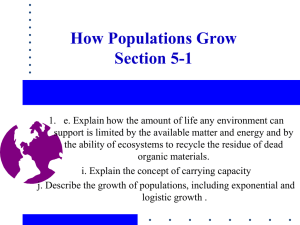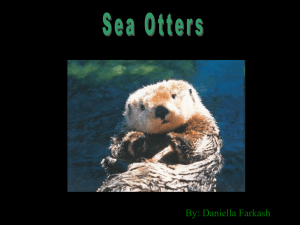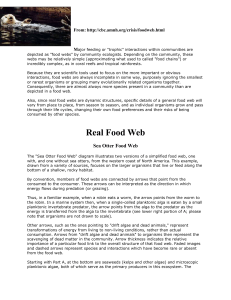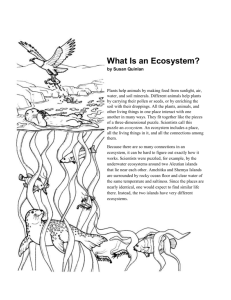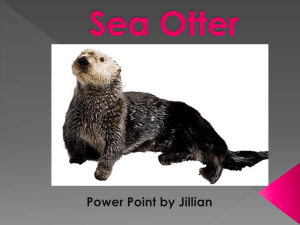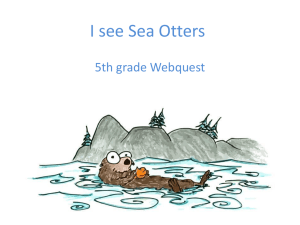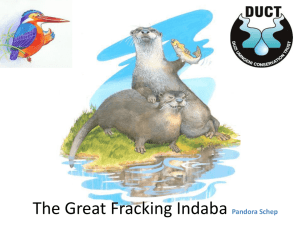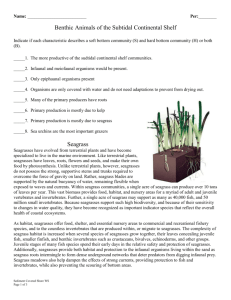it`s a beautiful day on the washington coast
advertisement
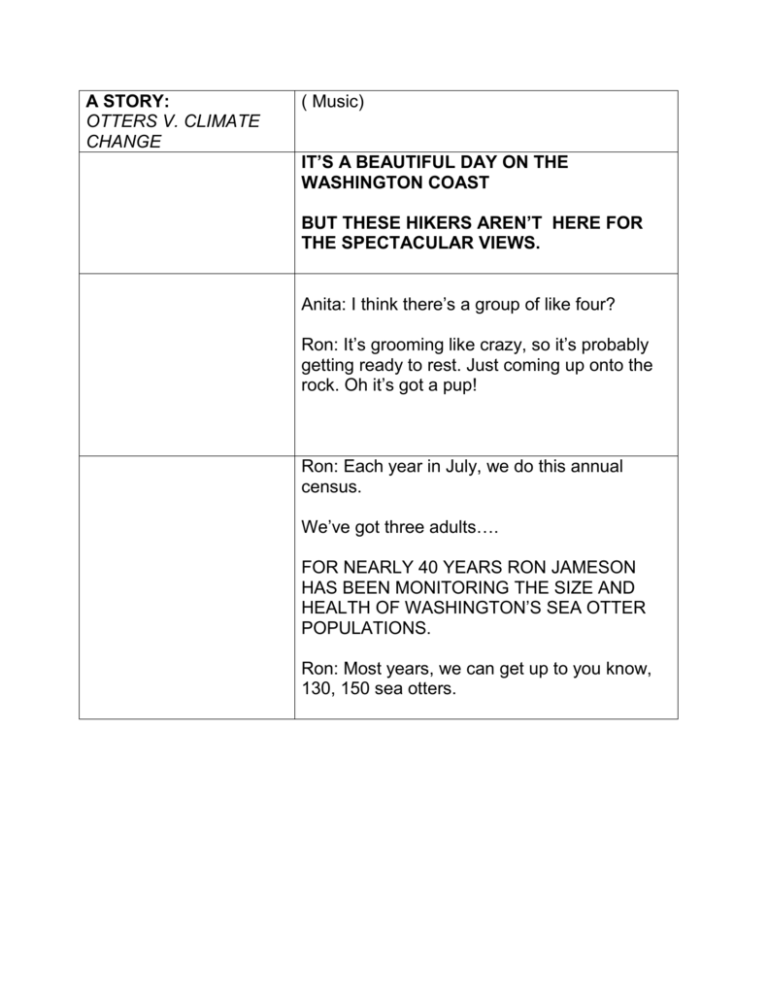
A STORY: OTTERS V. CLIMATE CHANGE ( Music) IT’S A BEAUTIFUL DAY ON THE WASHINGTON COAST BUT THESE HIKERS AREN’T HERE FOR THE SPECTACULAR VIEWS. Anita: I think there’s a group of like four? Ron: It’s grooming like crazy, so it’s probably getting ready to rest. Just coming up onto the rock. Oh it’s got a pup! Ron: Each year in July, we do this annual census. We’ve got three adults…. FOR NEARLY 40 YEARS RON JAMESON HAS BEEN MONITORING THE SIZE AND HEALTH OF WASHINGTON’S SEA OTTER POPULATIONS. Ron: Most years, we can get up to you know, 130, 150 sea otters. AND NEW RESEARCH SUGGESTS MORE REASONS TO KEEP AN EYE ON THEM. IT TURNS OUT THAT OTTERS PLAY A KEY ROLE IN COMBATTING CLIMATE CHANGE BY PROTECTING UNDERWATER KELP FORESTS. LIKE ALL PLANTS, KELP SEQUESTERS CARBON DIOXIDE FROM THE ATMOSPHERE TO CREATE ITS LEAFY STRUCTURE. IN FACT, KELP FORESTS ARE ONE OF THE WORLD’S MOST EFFICIENT ABSORBERS OF CO2. BUT KELP FORESTS NEED SEA OTTERS AROUND TO DEFEND THEM FROM PREDATORS. AND THE SURVIVAL OF OTTERS HAS BEEN ANYTHING BUT GUARANTEED. ( music) FROM THE MID 1700s TO THE EARLY 1900s, SEA OTTERS WERE WIDELY HUNTED FOR THEIR LUXURIENT FUR. Shawn Larson: It was the most valuable fur that fur traders could get their hands on. Shawn Larson: And many sea otter populations were wiped out throughout their range … from Russia and Japan, all the way through Alaska … and all along the West Coast of the United States, including in Northern California, Oregon and Washington. BY THE END OF THE FUR TRADE IN 1911, ONLY ABOUT A THOUSAND SEA OTTERS REMAINED IN THE ENTIRE NORTH PACIFIC OCEAN. BUT IN THE 1960s AND EARLY 1970s THE U.S. FISH AND WILDLIFE SERVICE AND SEVERAL STATE AGENCIES SET ABOUT RESTORING THEM TO THEIR FORMER RANGE. Archival narrator: “The C-130 cargo aircraft can accommodate 60 sea otters.” SOME 700 SEA OTTERS WERE CAPTURED IN ALASKA AND RELOCATED TO WASHINGTON, OREGON AND BRITISH COLUMBIA. Archival narrator: “They’re in good condition when they arrive, and they take to the waters of Oregon as if this were their home.” Shawn Larson: Only about a few dozen sea otters were moved to Washington state. And of those we think about a dozen survived to found the population that now numbers about 1,100 animals off the coast of Washington. SINCE 1989 WASHINGTON’S SEA OTTER POPULATION HAS GROWN ROUGHLY EIGHT PERCENT A YEAR. IT’S ONE OF THE HEALTHIEST POPULATIONS ON THE WEST COAST. THAT’S GOOD NEWS-- NOT JUST FOR THE OTTERS BUT ALSO FOR THE KELP. BECAUSE SEA OTTERS LOVE TO EAT A CREATURE THAT THREATENS THESE UNDERWATER FORESTS. SEA URCHINS ARE SMALL, SPIKY CREATURES THAT PLAY A SURPRISINGLY LARGE ROLE IN THE KELP FOREST ECOSYSTEM. IF LEFT UNCHECKED, URCHINS WILL DEVOUR KELP AT AN ASTONISHING RATE. FORTUNATELY, URCHINS ARE A FAVORITE FOOD OF SEA OTTERS. Kristin Laidre: Sea otters have a very high metabolism and they eat up to 25 percent of their bodyweight per day. And when the sea otters go down and remove those urchins you end up actually having a big growth or bloom of that kelp because it no longer has urchins to kind of graze it down. Ron Jameson: And when sea otter predation is removed, the urchin populations just basically explode. … they become so abundant that they can actually graze the ocean bottom down to what’s often referred to as urchin barrens. Shawn: And then it just looks like an underwater desert with just urchins there. ( breathing in mask, splashing) BOB SIZEMORE COUNTS SEA URCHINS OFF THE WASHINGTON COAST TO KEEP TABS ON THE SIZE OF THE POPULATION Bob: We began doing these surveys in the early 1980s so we have almost 30, 35 years of data. So we can track the population when it goes up and when it goes down, and then try to assign a reason why that’s happening. When I started here in the early 1990s, urchins were very abundant throughout the entire Straight of Juan de Fuca. There was urchins everywhere. they’ve been called carpets of urchins. THESE HERDS OF URCHINS OCCUR WHEN AN ECOSYSTEM FALLS OUT OF BALANCE. IN HEALTHY SYSTEMS SEA OTTERS AND OTHER TOP PREDATORS KEEP URCHIN POPULATIONS IN CHECK. THAT ALLOWS KELP TO GROW AND TO SEQUESTER MORE CARBON. IN WASHINGTON STATE, IN THE MID 1990s A GROUP OF MORE THAN 100 SEA OTTERS WANDERED INTO THE STRAIGHT OF JUAN DE FUCA. THEY STAYED THERE FOR MORE THAN THREE MONTHS FEASTING ON URCHINS. Bob Sizemore: We heard about the sea otters coming in, and so we went back into that location and surveyed again. And what we found was amazing. ( Music) Basically the sea urchins were gone. The only sea urchins we saw were very tiny ones and they were tucked inside the cracks and crevices of the rocks. IN A MATTER OF WEEKS, THESE OTTERS DEVOURED UP TO A MILLION POUNDS OF URCHIN. Bob: To see that change overnight was amazing, as a biologist and just as a diver. It was a pretty dramatic change. AS WEST COAST SEA OTTER POPULATIONS HAVE REBOUNDED, SO HAVE THE KELP FORESTS. AND IT’S HAVING A MEASURABLE IMPACT ON CLIMATE CHANGE. ACCORDING TO A RECENT STUDY, KELP FORESTS CAN ABSORB UP TO TWELVE TIMES MORE ATMOSPHERIC CO2 WHEN SEA OTTERS ARE KEEPING WATCH. AND ALL THAT CARBON CAN REALLY ADD UP. THE CARBON SEQUESTERED EACH YEAR BY NORTH PACIFIC KELP IS EQUIVALENT TO TAKING AS MANY AS SIX MILLION PASSENGER CARS OFF THE ROAD. Kristin Laidre: We know that top predators play a big role in ecosystems. Sea otters are an example where they really could have an effect on carbon storage because of the blooms in kelp with their presence. And I think most certainly there are other possibilities in either marine or terrestrial systems where that could be the case. If conserving a predator can also have a positive impact on carbon storage or on kind of fighting climate change, that’s certainly a win, win. Ron Jameson: It was one of those situations where human beings were able to right something that was wrong. And we don’t get that opportunity very often and often when we try to do something like that we fail. In this case I think we succeeded. QUEST SPOTLIGHT BUMP: :05 ( Music)
